The Batu Caves in Malaysia are a must-visit destination for those captivated by the country’s rich cultural and spiritual heritage. Nestled within towering limestone hills, this remarkable site features a stunning 272-step staircase leading to the vibrant Cathedral Cave, adorned with intricate carvings and a majestic gold statue of Lord Murugan. As visitors enjoy the serene atmosphere, they’ll witness colorful rituals and explore the architectural marvels that make the Batu Caves a significant pilgrimage site for devotees and a captivating destination for travelers alike. Unraveling the captivating history and hidden gems of this remarkable site promises to leave a lasting impression.
Key Points
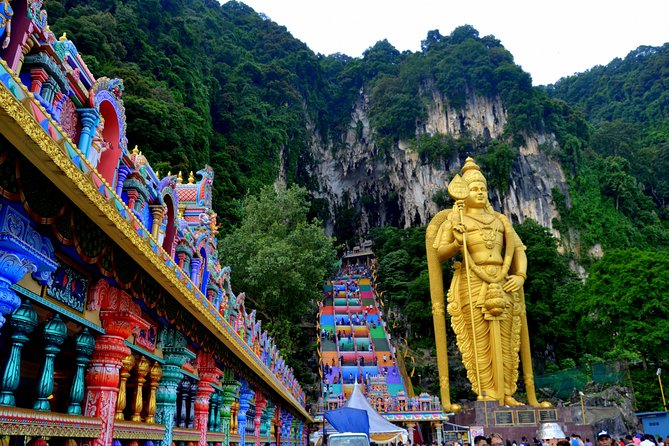
-
The Batu Caves are a renowned Hindu shrine complex featuring a 272-step staircase leading to the Cathedral Cave, home to a grand statue of Lord Murugan.
-
The intricate carvings, vibrant colors, and ornate shrines within the Cathedral Cave create a serene and awe-inspiring atmosphere for worshippers and visitors.
-
The Batu Caves’ geological history is showcased through its stunning limestone formations, including ancient stalagmites and stalactites that have developed over millions of years.
-
Visitors can enjoy Malaysian cultural heritage by observing traditional pewter craftsmanship at the Royal Selangor Visitor Centre and batik artistry at the Batik Boutique.
-
The Batu Caves hold significant historical and religious significance, having been a Hindu pilgrimage site since the late 19th century and hosting the annual Thaipusam festival.
The Majestic Batu Caves
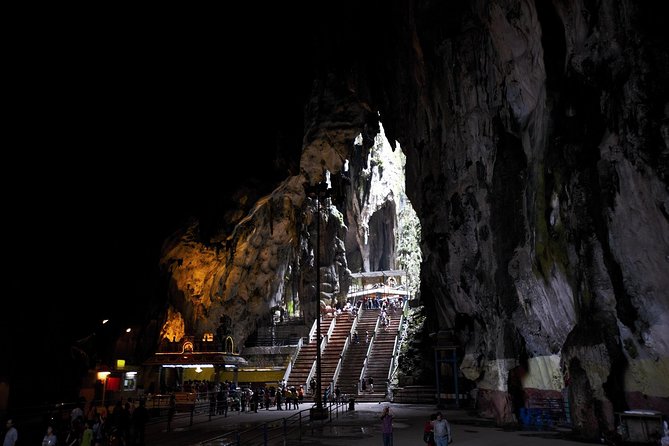
Located just north of Kuala Lumpur, the Batu Caves are a renowned limestone hill with a series of caves and cave temples.
These majestic caves are home to the impressive 272-step staircase leading up to the main temple cave, where devotees flock to honor the Hindu deity Lord Murugan.
The sheer size and grandeur of the main cavern, with its towering ceiling and dramatic limestone formations, leave visitors in awe.
Beyond the iconic staircase, the Batu Caves complex also features several other shrines, temples, and the occasional playful troop of long-tailed macaques.
This cultural and spiritual landmark is a must-visit destination for those seeking to enjoy Malaysia’s rich Hindu heritage.
You can also read our reviews of more tours and experiences in Kuala Lumpur.
Exploring the Hindu Shrine
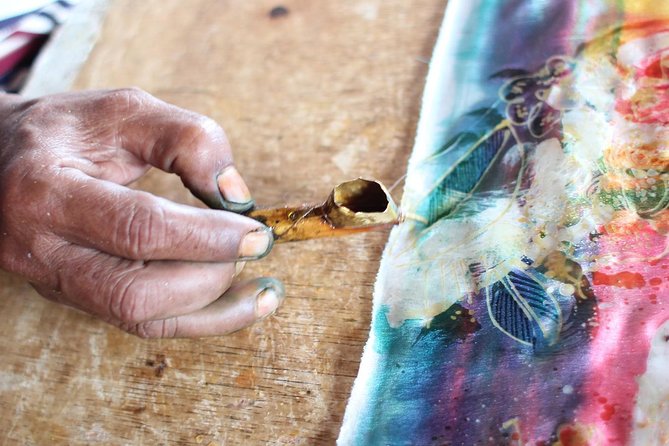
Visitors to the Batu Caves are immediately captivated by the towering 272-step staircase leading up to the main temple cave.
This imposing staircase opens up to the Cathedral Cave, a vast cavern housing a Hindu shrine dedicated to Lord Subramaniam.
As visitors ascend the steps, they’re greeted by the vibrant colors and intricate carvings that adorn the cave walls and ceiling.
The cave’s centerpiece is the impressive gold-colored statue of Lord Murugan, standing guard over the spiritual site.
Worshippers come to pay their respects, light incense, and offer prayers, creating a serene and reverent atmosphere within the cavernous space.
Architectural Marvels Within the Caves
Amidst the grandeur of the Batu Caves, visitors are captivated by the intricate architectural marvels that adorn the cavernous spaces. The main cathedral-like cavern, known as the Temple Cave, features towering vaulted ceilings and ornate Hindu shrines. Delicate statues and carvings of deities line the walls, showcasing the exceptional craftsmanship of the structures.
| Feature | Description |
|---|---|
| Ceiling Vaults | Towering arches and domes that create a grand, cathedral-like atmosphere. |
| Shrines | Elaborately decorated Hindu shrines dedicated to Lord Murugan and other deities. |
| Statues | Intricate stone carvings and statues of Hindu gods and goddesses. |
Beyond the Temple Cave, explorers can discover smaller cavities adorned with equally impressive architectural elements, each with its own unique character and spiritual significance.
Witness the Stunning Limestone Formations
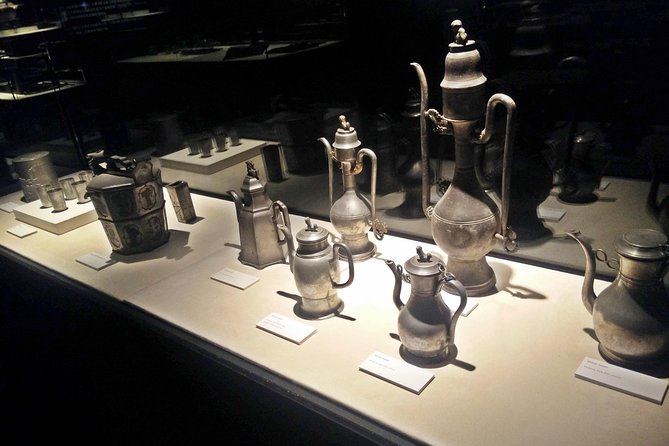
As one explores the depths of the Batu Caves, they’re captivated by the stunning limestone formations that have been sculpted by nature over millennia.
Towering stalagmites and stalactites, some reaching up to 400 million years old, stand as testament to the incredible power of erosion. These majestic natural wonders, formed from the gradual buildup of mineral deposits, create a breathtaking underground landscape.
Visitors can wander through cavernous chambers, marveling at the intricate patterns and vibrant hues of the limestone.
The Batu Caves offer a unique opportunity to witness the timeless artistry of the natural world, frozen in stone.
Immerse in the Vibrant Culture
The Batu Caves immerse visitors in a vibrant cultural experience that extends far beyond its towering limestone formations.
Climbing the 272 steps to the Hindu shrine, devotees and travelers alike can witness religious rituals and intricate carvings adorning the cave temples.
The experience is further enriched by visits to the Royal Selangor Visitor Centre, showcasing the art of pewter craftsmanship, and the Batik Boutique, providing insights into traditional Malaysian fabric design.
Comfortable transportation and guided commentary enhance the journey, offering a comprehensive cultural exploration.
Visitors can explore the heritage and craftsmanship that make the Batu Caves a truly immersive cultural destination.
- Kuala Lumpur City Tour Full Day 8 Hours
- Cameron Highlands Day Tour From Kuala Lumpur With Lunch (Sic – Shared Tours)
- Private Half-Day Temples and Cultural Tour in Kuala Lumpur
- Highlights & Hidden Gems With Locals: Best of Kuala Lumpur Private Tour
- Guided Eco Ride Segway Tour at Putrajaya, City in the Garden
- Sambal Streets Kuala Lumpur Food Tour With 15+ Tastings
Captivating History of the Batu Caves
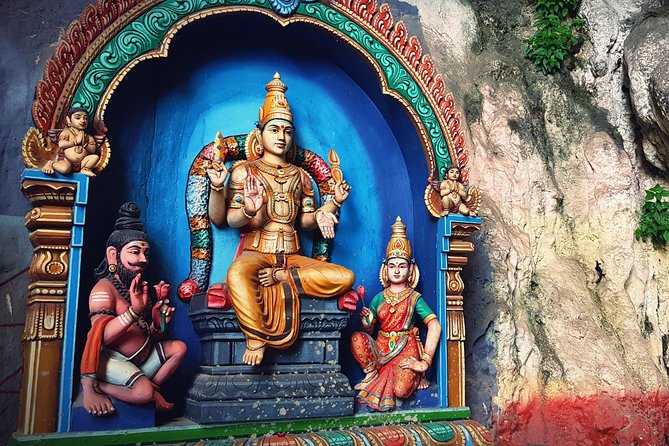
How did the Batu Caves come to be a renowned Hindu shrine?
The Batu Caves trace their origins back to the late 19th century when a Hindu monk named Śri Tāmaṇ Pet̄bing discovered the caves and dedicated them to the Hindu deity Lord Murugan.
Over time, the caves became a major pilgrimage site for Hindus across Malaysia. The 272-step staircase leading to the main cave temple is an iconic landmark, showcasing the site’s impressive scale and devotion.
Today, the Batu Caves host an annual Thaipusam festival, drawing thousands of worshippers who demonstrate their faith through colorful processions and rituals.
This captivating history has solidified the Batu Caves as a must-visit attraction and a testament to Malaysia’s rich cultural heritage.
Visiting the Royal Selangor Visitor Centre
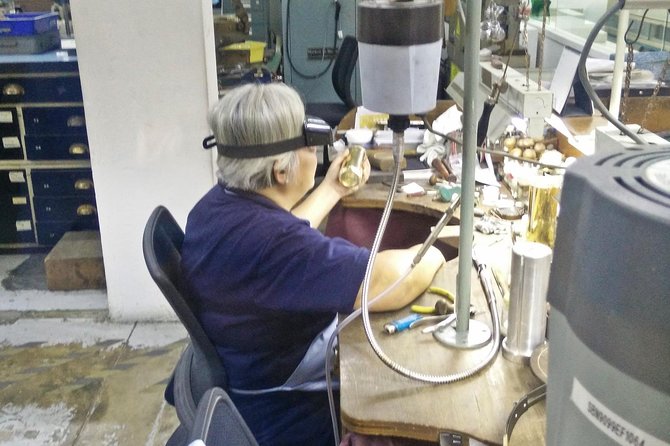
Alongside the captivating history of the Batu Caves, visitors can also explore the renowned Royal Selangor Visitor Centre during their tour.
This iconic venue showcases the craftsmanship of pewter, a traditional Malaysian metal alloy. Guests can observe skilled artisans at work, learn about the intricate process, and even try their hand at pewter crafting.
Beyond the demonstrations, the centre features a range of exquisite pewter products, from decorative pieces to functional tableware.
This cultural experience provides a deeper understanding of Malaysia’s rich heritage and allows visitors to enjoy the country’s time-honored traditions.
Discover the Beauty of Batik Art
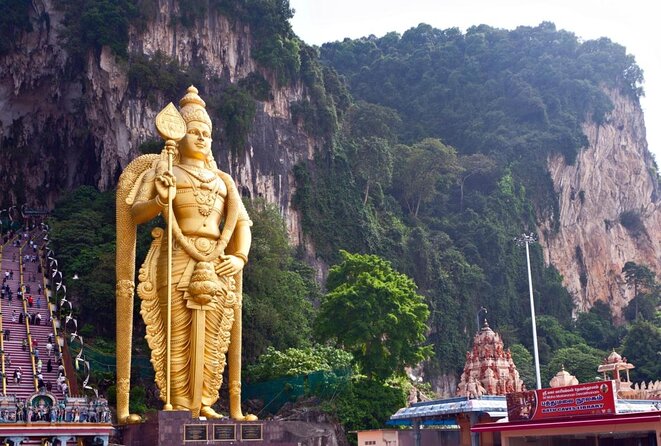
Batik, the renowned traditional textile art of Malaysia, captivates visitors during the Batu Caves tour.
At the Batik Boutique, guests can observe skilled artisans meticulously crafting intricate batik designs using wax and dye techniques. The vibrant patterns and colors showcase the rich cultural heritage of Malaysia.
Visitors have the opportunity to purchase these beautiful handmade batik fabrics, scarves, or clothing items as unique souvenirs.
The Batu Caves tour provides an immersive cultural experience, allowing travelers to appreciate the artistry and craftsmanship that goes into creating these timeless Malaysian textiles.
Discovering the beauty of batik is an integral part of the Batu Caves adventure.
Frequently Asked Questions
What Are the Transportation Options to Reach the Batu Caves?
One can choose a private half-day tour with hotel pickup and drop-off in Kuala Lumpur, priced from $35.00, to reach the Batu Caves. Alternatively, visitors can opt for public transportation or hire a taxi or ride-sharing service.
Are There Any Discounts or Package Deals Available for the Batu Caves Tour?
The Batu Caves tour offers a private half-day option with hotel pickup and drop-off for $35. There are also package deals available, such as the Kuala Lumpur City Tour with Petronas Twin Tower Admission from $80.
Can Visitors Explore the Batu Caves on Their Own Without a Guided Tour?
Visitors can explore the Batu Caves on their own without a guided tour, but they’ll miss out on the cultural insights and commentary a tour provides. Self-guided visits allow more flexibility but lack the guidance to fully appreciate the site’s significance.
What Are the Dress Code Requirements for Visiting the Batu Caves?
Visitors to the Batu Caves should wear modest clothing that covers the shoulders and knees. Shorts, sleeveless tops, and revealing attire are generally discouraged as it’s a religious site. Comfortable walking shoes are also recommended.
Are There Any Accessibility Options for Visitors With Disabilities at the Batu Caves?
The Batu Caves offer limited accessibility options for visitors with disabilities. While the caves have some stairs, there are ramps and handrails to assist. Visitors should inquire about specific accessibility needs when booking their tour.
Recap
The Batu Caves stand as a testament to Malaysia’s rich cultural and spiritual heritage. Visitors can enjoy the captivating history, vibrant rituals, and remarkable architectural beauty of this significant pilgrimage site. From the majestic limestone formations to the intricate carvings and gold statue, the Batu Caves offer a truly breathtaking experience for devotees and travelers alike.
More Tour Reviews in Kuala Lumpur
- Genting Highlands Day Tour: An Exciting and Fun-Filled Experience
- Putrajaya & Premium Outlet
- Genting Highlands to Kuala Lumpur International Airport En-route Batu Caves
- Petronas Twin Towers Admission With Private Pickup & Nasi Kandar
- Batu Caves, Waterfalls and Hot Springs Tour With Lunch
- Private Kuala Lumpur Night Delight Food Tour
Not for you? Here's more things to do in Kuala Lumpur we have recnetly reviewed
- 25 Best Cruises And Boat Tours In Kuala Lumpur
- 25 Best Dining Experiences In Kuala Lumpur
- 20 Best Full-Day Tours In Kuala Lumpur
- Best 2 Day Tours In Kuala Lumpur
- 2 Best 3 Day Tours In Kuala Lumpur
- 23 Best Dinner Tours In Kuala Lumpur
- 25 Best Lunch Experiences In Kuala Lumpur
- 25 Best Food Tours In Kuala Lumpur
- 4-Day Jungle Experience in Taman Negara From Kuala Lumpur
- 3-Night Cameron Highlands and Penang Tour From Kuala Lumpur
- Private Transfer : Kuala Lumpur Hotel to Penang Hotel
- *Chauffeur: Kuala Lumpur to Singapore Transfer [Car]
